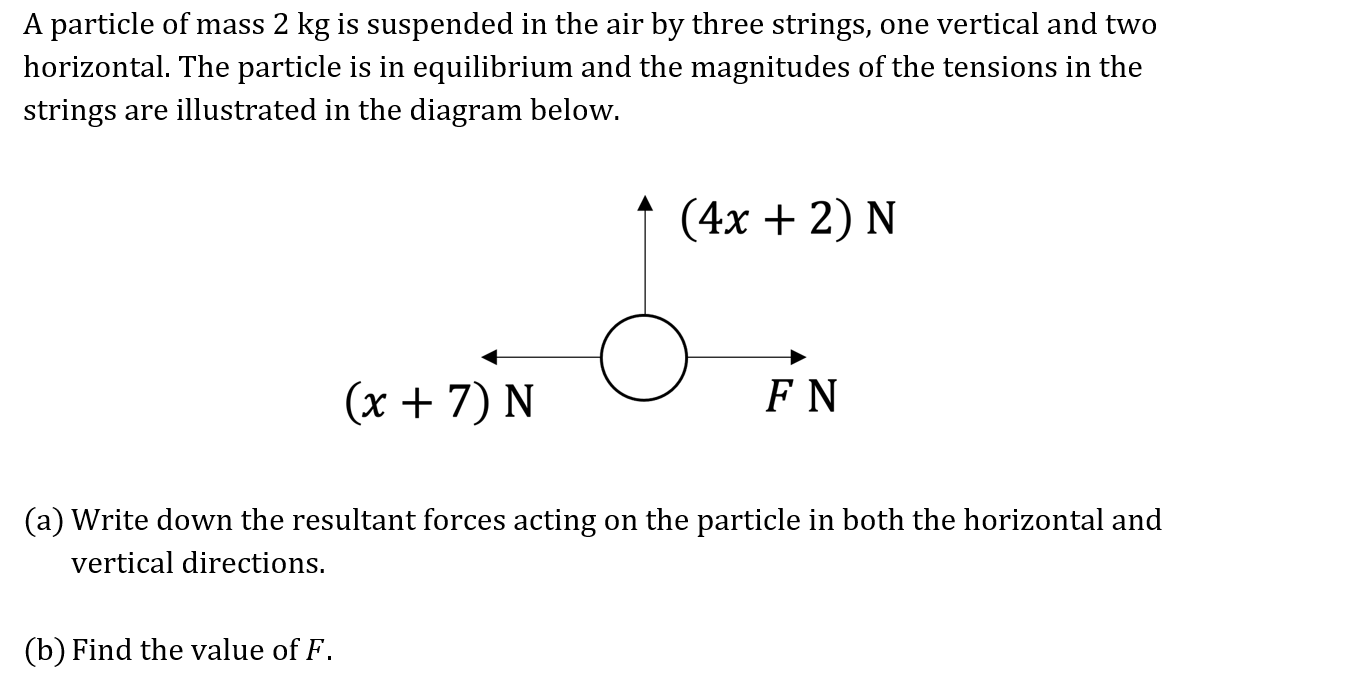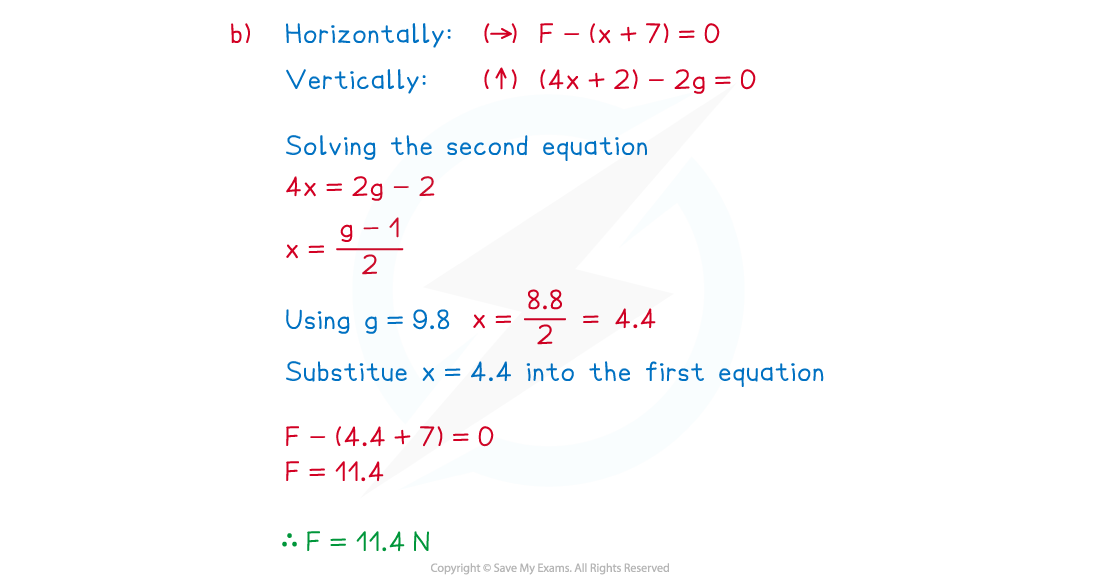- 翰林提供学术活动、国际课程、科研项目一站式留学背景提升服务!
- 400 888 0080
Edexcel A Level Maths: Mechanics:复习笔记3.1.3 Equilibrium in 2D
Equilibrium in 2D
What does two dimensions (2D) mean in mechanics?
- In two dimensions, a particle may be considered as existing and being able to move around two-dimensional space rather than in a single straight line (1D)
- This 2D space is called a plane – so you may see the 0xy plane mentioned
- The directions of the two dimensions are chosen so that they are perpendicular to each other
- The two directions are usually
- horizontal and vertical, or
- parallel and perpendicular to an inclined plane
What is the resultant force in 2D and an unbalanced force in 2D?
- The resultant force in 2D is the sum of forces acting on a particle but this will now need to be considered in two parts – one for each direction
- An unbalanced force is a force acting on a particle that whereby one or both parts are not cancelled by another force acting in the opposite direction
- So a non-zero resultant force will be non-zero in at least one of the two dimensions, is therefore unbalanced and the particle will accelerate
What does equilibrium in 2D mean?
- In two dimensions a particle is in equilibrium if the resultant force acting on it is zero
- For example, if the two dimensions involved are the horizontal and vertical directions, a particle will be in equilibrium if any forces acting left are balanced by any forces acting right and any forces acting up are balanced by any forces acting down
- When a particle has several forces (at least 3 – have a think as to why!) acting on it – and it is in equilibrium – the forces can be drawn “nose-to-tail” such that they form a polygon

Worked Example

(a) Write down the resultant forces acting on the particle in both the horizontal and vertical directions.


(b) Find the value of F.

Exam Tip
- Fnet is often used for resultant force in equations.
- Sketching diagrams, or adding to any given in a question, can help you to understand a problem and pick up some marks.
转载自savemyexams


最新发布
© 2025. All Rights Reserved. 沪ICP备2023009024号-1








